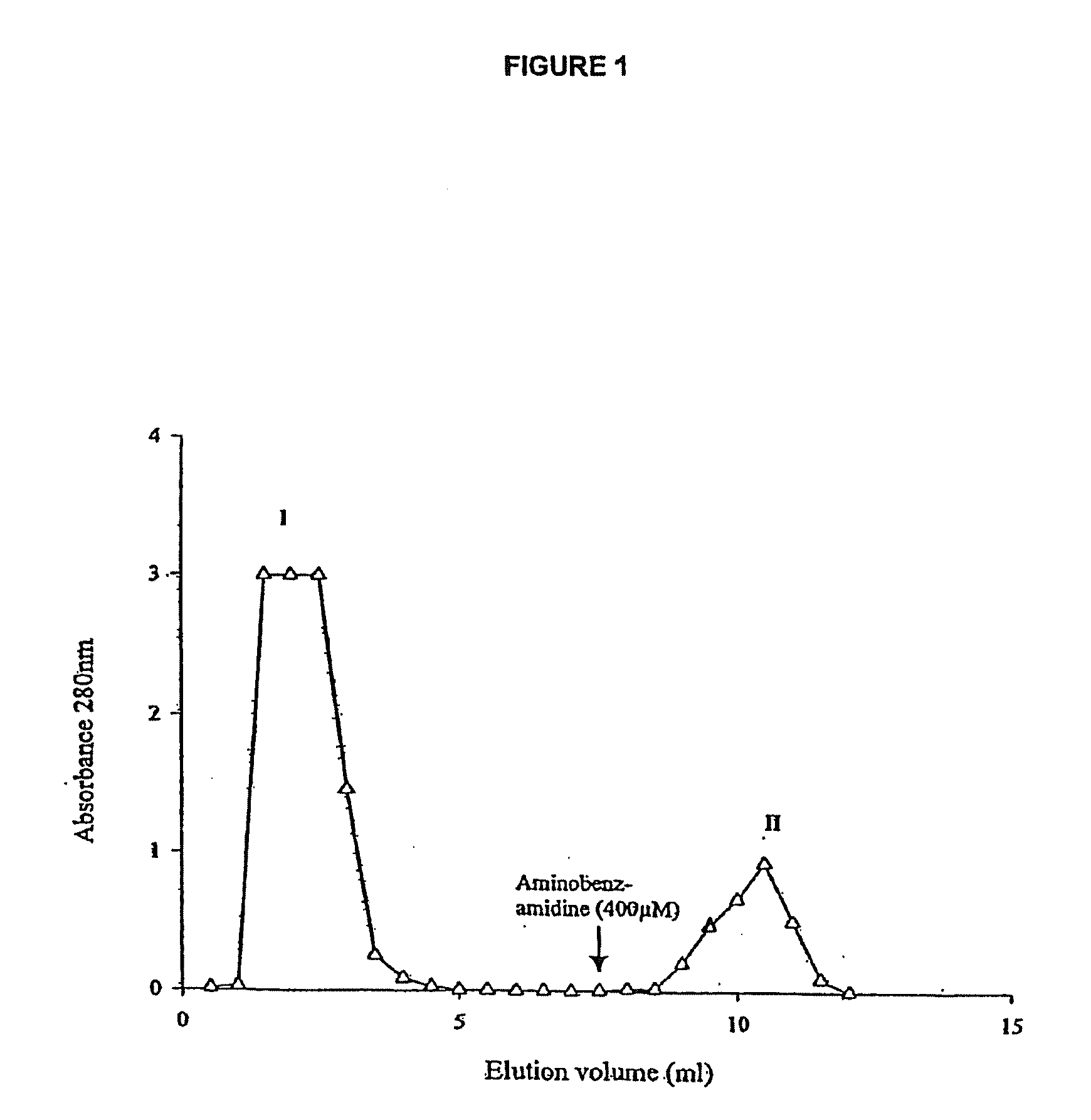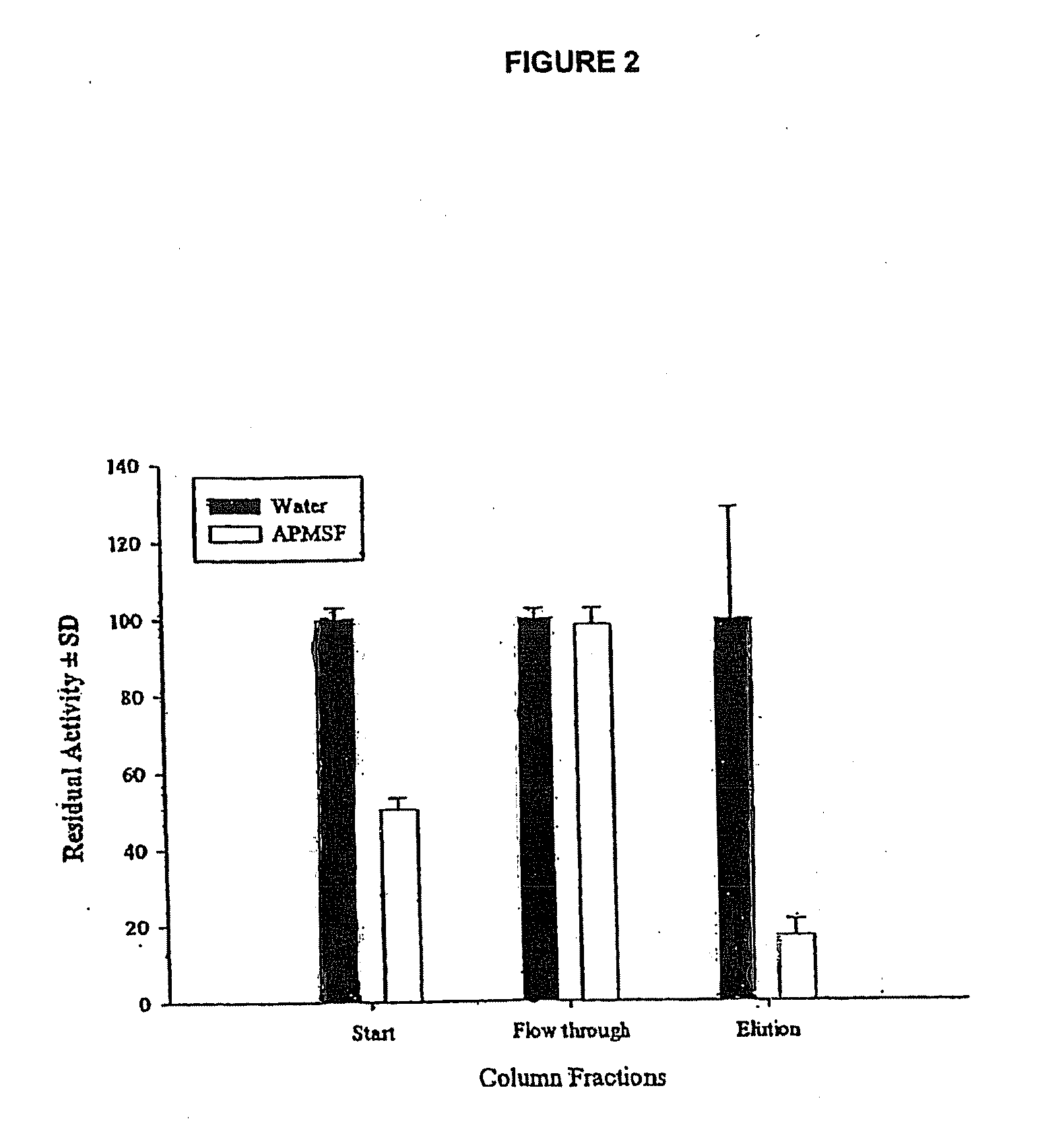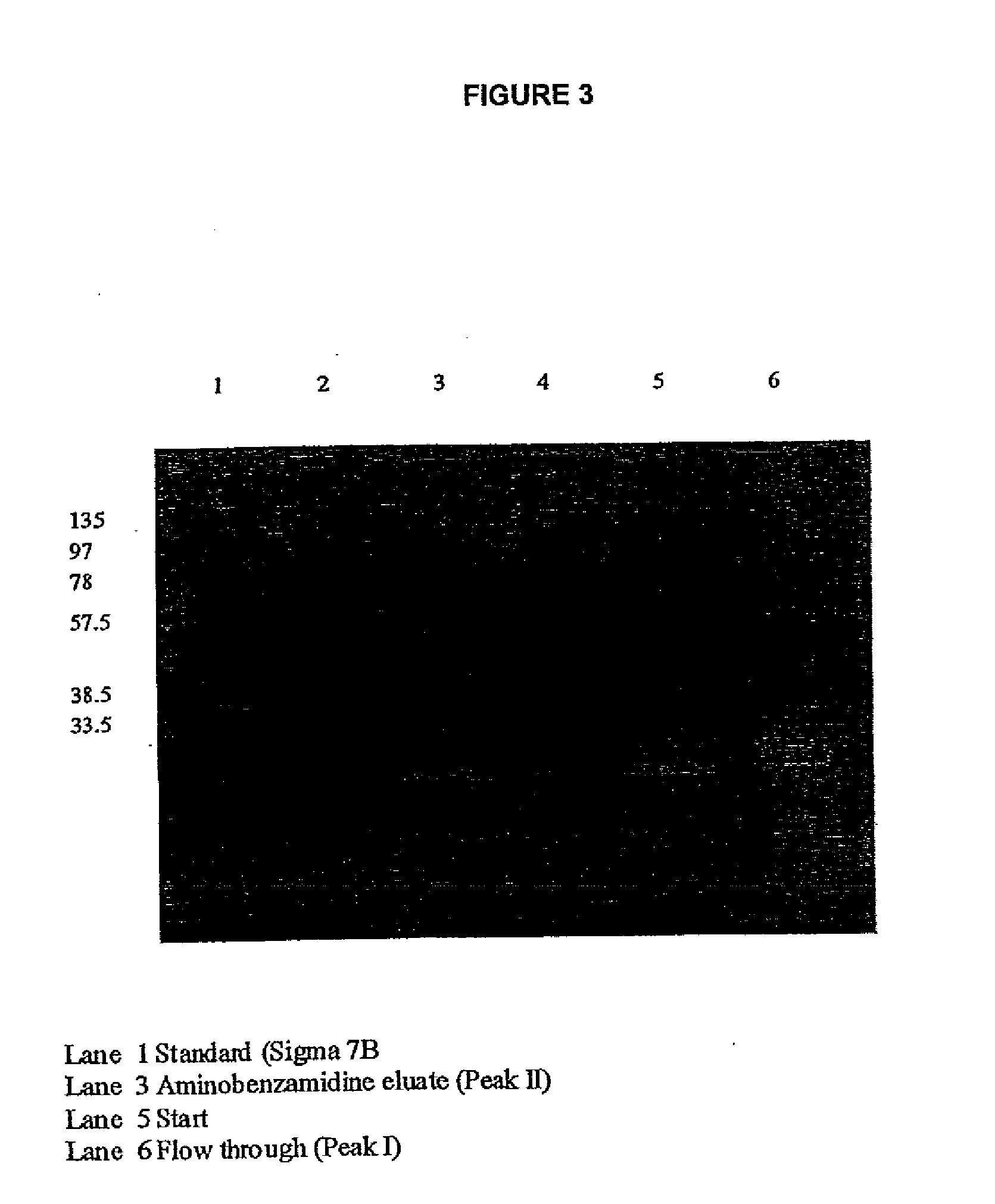Treatment of wounds
a wound and wound technology, applied in the field of wound treatment, can solve the problems of untreatable wounds, little literature on the way in which these larvae heal, and only partially effective substances, so as to promote wound healing, promote wound healing, and promote wound healing.
- Summary
- Abstract
- Description
- Claims
- Application Information
AI Technical Summary
Benefits of technology
Problems solved by technology
Method used
Image
Examples
example 1
Isolation and Assay of the Trypsin-Like Serine Proteinase of the Invention
[0135]The trypsin-like serine proteinase was purified by affinity chromatography of Lucilia sericata ES on aminobenzamidine agarose. The column matrix (1 ml) was equilibrated with 20 ml of 0.025M Tris-HCl buffer pH 8.0 containing 0.5M NaCl. The crude ES (0.5 ml, 70 μg / ml protein) was diluted with an equal volume of buffer before application to the column. Fractions (0.5 ml) were collected throughout the chromatography. After washing with 6.5 times column volume of buffer to remove unbound protein, the free aminobenzamidine ligand (2 ml 400 μM) was used to elicit the elution of bound material. Absorbance readings of the fractions at 280 nm were used to establish the positions of the unbound (flow-through) and bound peaks which were then collected for assay. The elution profile is shown in FIG. 1
[0136]Aminobenzamidine agarose binds trypsin-like serine proteinases. Following application of larval enzyme secretion...
example 2
Investigation of Proteolytic Behaviour of the Larval Enzyme (ES) with FITC-Casein
[0138]The activity of Lucilia sericata ES in FITC-casein hydrolysis at pH8 was investigated using different presentations of ES (0.25 μg) as follows:
[0139]A. ES+H2O
[0140]B. ES+ethanol
[0141]C. ES pre-incubated with 0.2 mM PMSF
[0142]D. ES pre-incubated with 0.6 mM PMSF
[0143]E. ES pre-incubated with 1 mM PMSF
[0144]F. ES pre-incubated with 0.04 mM APMSF
[0145]G. ES pre-incubated with 0.12 mM APMSF
[0146]H. ES pre-incubated with 0.2 mM APMSF
[0147]The proteolytic activity of Lucilia sericata ES was inhibited following pre-incubation with the irreversible serine proteinase inhibitor PMSF. It was totally inhibited in the case where the ES had been pre-incubated with 1 mM PMSF. PMSF is dissolved in ethanol and the effect of the solvent on the activity of the ES was negligible. In contrast approximately 50% of residual serine proteinase activity from ES was detected in the cases where the ES had been pre-incubated ...
example 3
Investigation of the Proteolytic Activity of the Larval Enzyme (ES) Against Specific Substrates
[0156]The activity of Lucilia sericata ES (0.25 μg) against Tosyl-Gly-Pro-Arg-AMC (a) and against Suc-Ala-Ala-Phe-AMC (b) in the presence of APMSF and PMSF was investigated using different presentations of ES as follows: \
(a)
[0157]A. ES
[0158]B. ES pre-incubated with 0.025 mM APMSF
[0159]C. ES pre-incubated with 0.05 mM APMSF
[0160]D. ES pre-incubated with 1 mM PMSF
(b)
[0161]E. ES
[0162]F. ES pre-incubated with 0.2 mM APMSF
[0163]G. ES pre-incubated with 1 mM PMSF
[0164]The residual activity (%) values obtained were as follows:
(a)
[0165]A. 100%
[0166]B. 14.3%
[0167]C. 3.6%
[0168]D. 0%
(b)
[0169]E. 100%
[0170]F. 86.8%
[0171]G. 1.3%
The results are shown graphically in FIG. 5.
[0172]The results for (a) reveal the “trypsin-like” serine proteinase activity present in Lucilia sericata ES. The hydrolysis of Tosyl-Glyc-Pro-Arg-AMC (selective for the serine proteinases thrombin and plasmin) was inhibited by 1 mM P...
PUM
| Property | Measurement | Unit |
|---|---|---|
| molecular weight | aaaaa | aaaaa |
| pH | aaaaa | aaaaa |
| molecular weight | aaaaa | aaaaa |
Abstract
Description
Claims
Application Information
 Login to View More
Login to View More - R&D
- Intellectual Property
- Life Sciences
- Materials
- Tech Scout
- Unparalleled Data Quality
- Higher Quality Content
- 60% Fewer Hallucinations
Browse by: Latest US Patents, China's latest patents, Technical Efficacy Thesaurus, Application Domain, Technology Topic, Popular Technical Reports.
© 2025 PatSnap. All rights reserved.Legal|Privacy policy|Modern Slavery Act Transparency Statement|Sitemap|About US| Contact US: help@patsnap.com



